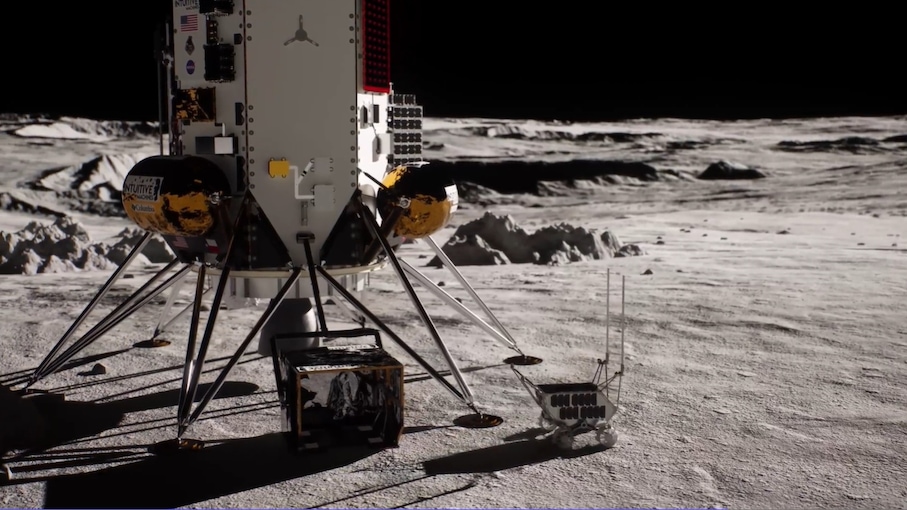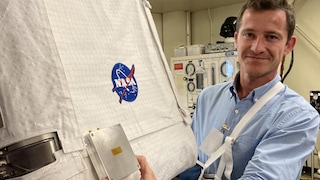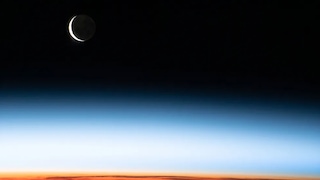An inside look at Nokia’s Moon mission
25 July 2023


Nokia Bell Labs is deploying the first cellular network on the Moon to demonstrate that cellular technologies can provide the critical communications needs for future lunar or Martian missions.
NASA has selected Nokia to participate in its Tipping Point initiative, which seeks industry-developed space technologies that can foster the development of commercial space capabilities and benefit future NASA missions. To that end, Nokia has partnered with Intuitive Machines and Lunar Outpost for the uncrewed lunar mission called IM-2, which will land at the Moon’s south pole. IM-2 is planned for 2024, though the exact timing will be determined by Nokia’s mission partners.
For this mission, Nokia Bell Labs has developed a low-power, compact and space-hardened version of its 4G/LTE microcell. The network is specifically designed to survive the journey to the Moon and operate under the extreme temperature, radiation and environmental conditions of the lunar surface.
The lunar 4G/LTE system will have two primary components. The first is the base station unit, which will be integrated directly into Intuitive Machines’ spacecraft, the Nova-C lander, and act as the cell-site for the Moon network. The second component will be the radio equipment installed on two lunar vehicles: Lunar Outpost’s Mobile Autonomous Prospecting Platform (MAPP) rover and Intuitive Machines’ Micro-Nova hopper. Together these radio components will form a network that will allow the vehicles and lander to communicate with one another. A powerful direct-to-Earth radio connection from the lander will provide a link home, over which mission controllers will receive data and images and remotely operate the vehicles over the cellular network.
Thierry Klein, President of Bell Labs Solutions Research at Nokia, said: “Like shelter, food and life support, communications will be a crucial component of any future lunar or Mars mission. Instead of ‘reinventing the wheel’ by creating a proprietary network in space, we are taking advantage of the same state-of-the-art technologies that connect billions of smartphones on Earth.”
Klein continued: “Humanity has always been fascinated by space, and that interest has only intensified in the 21st century. We are sending more humans and more machines into space to explore, study and even pursue new business ventures. Wherever these humans and machines go in the solar system, they will need communications. Nokia is prepared to make that journey with them.”
Why Nokia is going to the Moon
Nokia wants to prove that cellular technologies can provide the reliable, high-capacity and efficient connectivity needed for future crewed and uncrewed missions to the Moon and other planets.
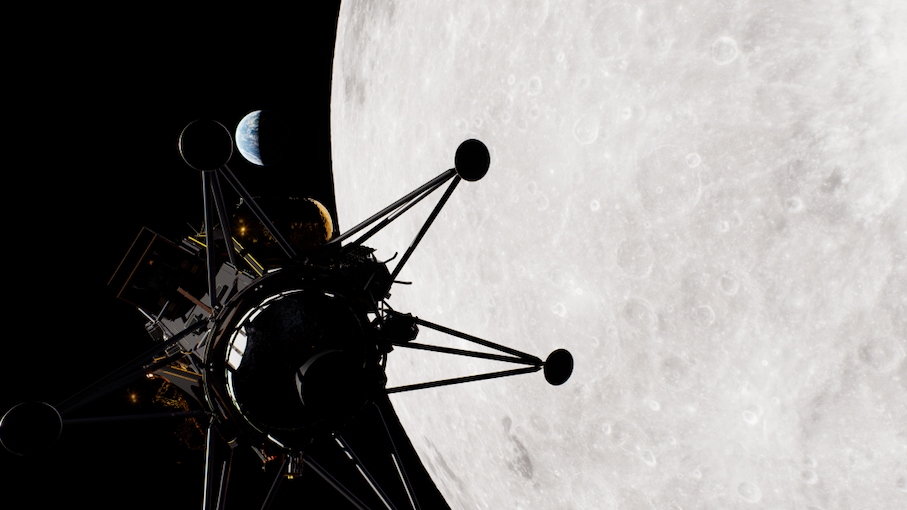
Source: Intuitive Machines and Nokia Bell Labs
For any sustained human presence on the Moon and on Mars in the future, connectivity and communications are critical. Astronauts will need the same advanced capabilities in space that we have on Earth to support their missions and live their lives. They will need access to voice, video and data communications capabilities as well as telemetry and biometric data. To perform their mission tasks, they will need tap into vast sensor grids, deploy scientific payloads and experiments, and remotely operate robots and other machinery. All these scenarios and applications will require robust network connectivity.
Nokia Bell Labs wants to meet the critical communications needs of space exploration for near-term and long-term missions. We feel the best way to do this isn’t by inventing an entirely new communications platform for planetary exploration. Rather, we should take advantage of the same technologies that connect billions of phones and devices here on Earth.
The IM-2 mission from launch to conclusion
The IM-2 mission will launch from NASA’s Kennedy Space Center at Cape Canaveral, Fla. A SpaceX Falcon 9 rocket will ferry the Nova-C lander into space on a direct trajectory to the Moon. From there, the lander will initiate its first sequence of engine burns, which will keep it and the Nokia network on course for the long journey to the Moon.
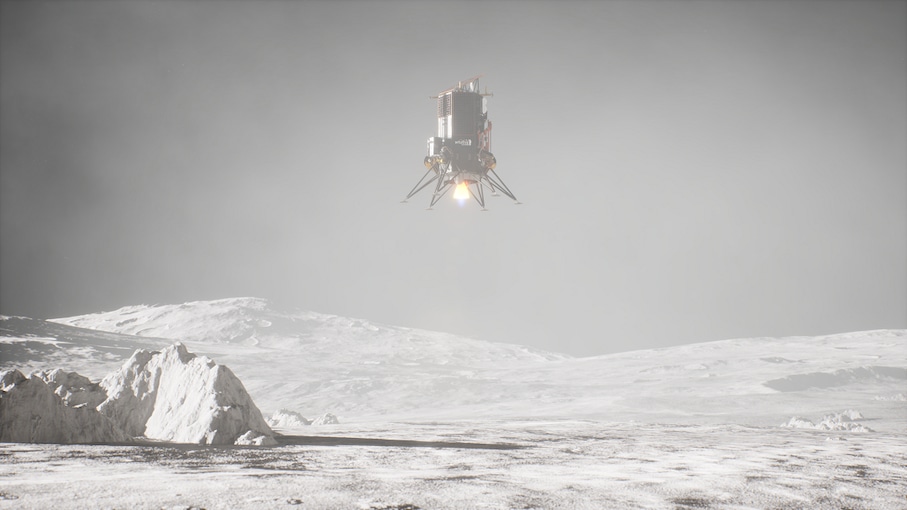
Source: Intuitive Machines and Nokia Bell Labs
After approximately five days of traveling through space, the Nova-C lander will enter the Moon’s orbit for one Earth-day. After circling the Moon multiple times, the lander will fire its engines once again to make a controlled descent to the lunar surface. The targeted landing zone is Shackleton Connecting Ridge at the Moon’s south pole.
IM-2 has multiple mission goals. To name a few, IM-2 will deploy a York Space Systems communications satellite into lunar orbit; it will excavate the lunar regolith with NASA’s PRIME-1 drill; it will search for evidence of lunar ice; and it will deploy the first exploration vehicles on the Moon’s south pole. Nokia’s 4G/LTE network will be a key element of several of these mission tasks, providing the underlying connectivity between the Nova-C lander and two mission vehicles.
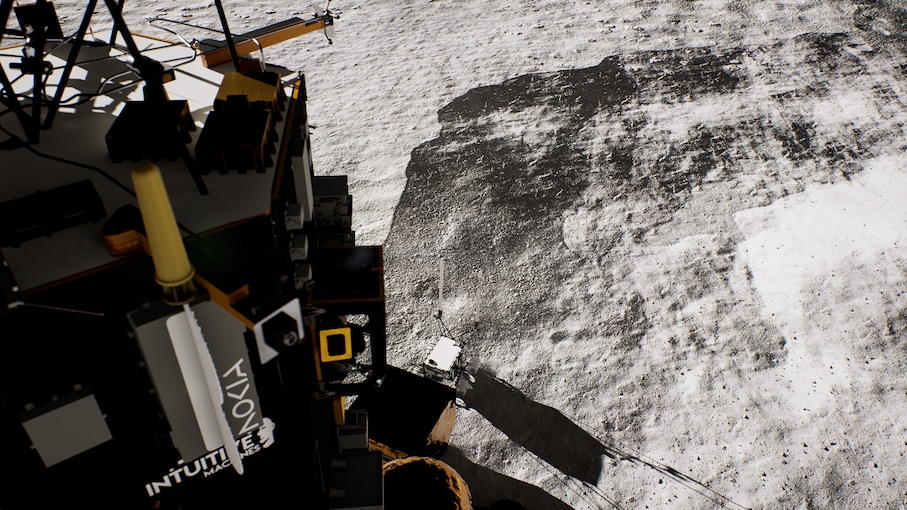
Source: Intuitive Machines and Nokia Bell Labs
Once on the lunar surface, the Nova-C lander will automatically deploy our network. The lander will lower a protective enclosure containing the Lunar Outpost MAPP rover to the ground. After the rover trundles onto the lunar surface, it will extend its antennas and establish a connection to the base station.
The MAPP rover will then begin a multi-day journey exploring the Shackleton Connecting Ridge. The rover will autonomously map the lunar surface while collecting stereo imagery and thermal data along the way. Most significantly, MAPP will collect samples of lunar regolith in a special bin mounted on the rover’s wheels. Images of this material, the first ever collected from the Moon’s south pole, will be sent back to NASA for analysis.
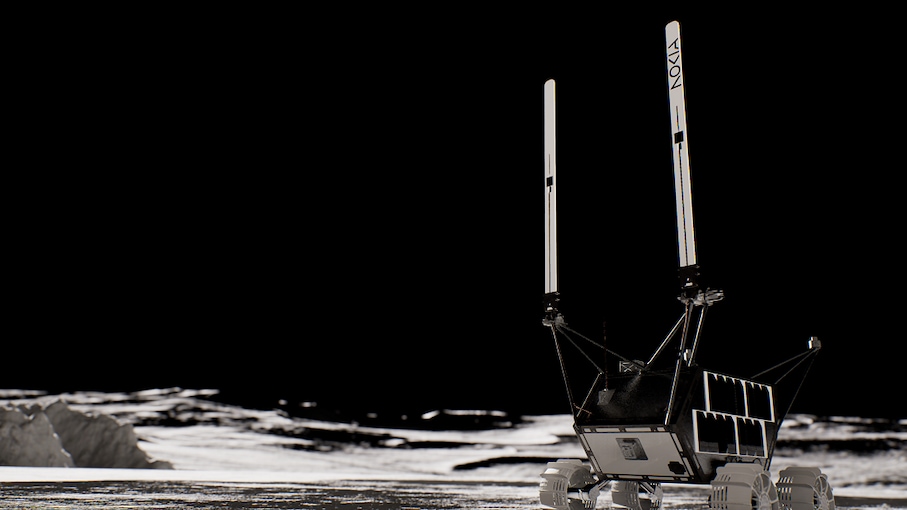
Source: Intuitive Machines and Nokia Bell Labs
Excerpts from the article
- Nokia wants to prove that cellular technologies can provide the reliable, high-capacity and efficient connectivity needed for future crewed and uncrewed missions to the Moon and other planets.
- Astronauts will need the same advanced capabilities in space that we have on Earth to support their missions and live their lives. They will need access to voice, video and data communications capabilities as well as telemetry and biometric data. To perform their mission tasks, they will need tap into vast sensor grids, deploy scientific payloads and experiments, and remotely operate robots and other machinery. All these scenarios and applications will require robust network connectivity.
- It’s possible that the first images of ice on the Moon could be sent over the Nokia lunar network.
- The trove of data collected on IM-2 will give us a wealth of knowledge about a key area of the Moon, helping pave the way for future crewed Artemis missions.
- The Moon’s surface is one of the most inhospitable environments we have ever encountered, with no atmosphere, no natural protection from cosmic radiation, and temperatures that can fluctuate by as much as 300° C between lunar day and night. If Nokia can build a network that can function on the Moon, we can build a network that can function in the most extreme environments on Earth.
Utilizing the sophisticated RESOURCE camera developed by MIT, MAPP will snap 3D images and shoot video of unique rock formations and craters, and it will look for signs of lunar ice in the shadows near the edges of those craters. MAPP will also deploy the AstroAnt, a miniature rover developed by MIT that will ride on top of the Lunar Outpost rover. The AstroAnt, which is about the size of Matchbox toy car, will drive around on the MAPP’s roof collecting temperature data while the MAPP rover itself rolls along the lunar surface. The images, data and telemetry collected by MAPP will be sent back to the lander over the 4G/LTE network and then relayed to Earth. Meanwhile Lunar Outpost mission controllers in Colorado will issue commands to the rover over the same connection.
While the MAPP rover is off exploring its surroundings, Intuitive Machines will deploy the second lunar vehicle, its Micro-Nova hopper. Unlike the MAPP rover, which will roll across the lunar surface on specially designed wheels, the Micro-Nova will fire hydrazine rockets in controlled bursts to propel itself short distances. In short, it will “hop” from place to place, accessing areas other vehicles can’t reach. The main task of the Micro-Nova is to search for lunar ice deep within a lunar crater. One expected component of that ice is water, which would be critical to any future crewed mission to the Moon.
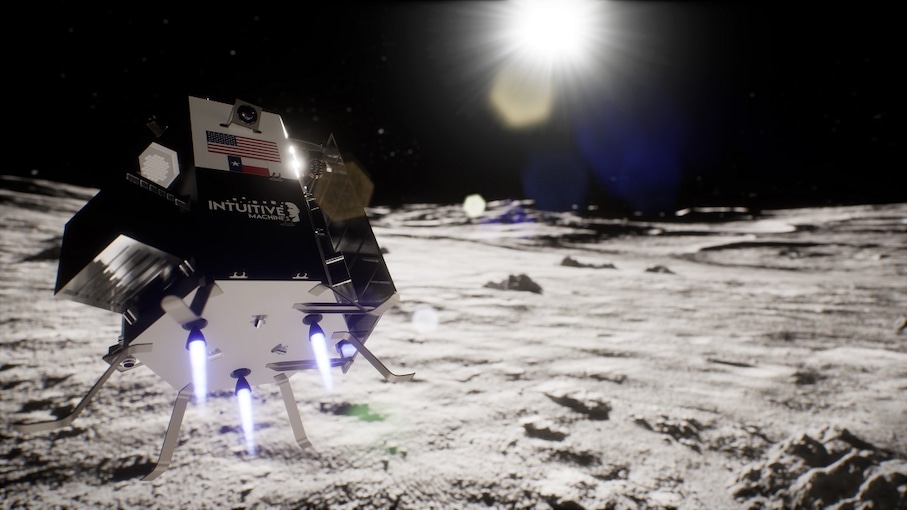
Source: Intuitive Machines and Nokia Bell Labs
Once offloaded from the lander, the Micro-Nova will establish a connection to the Nokia network and then begin a series of hops, each bringing it closer to its crater destination. On its penultimate hop, the Micro-Nova will descend into a crater where it will begin snapping pictures of potential ice deposits. The 4G/LTE network will then relay that data back to the lander and onwards to Earth, either from within the crater or after the Micro-Nova hops back to level ground. It’s possible that the first images of ice on the Moon could be sent over the Nokia lunar network.
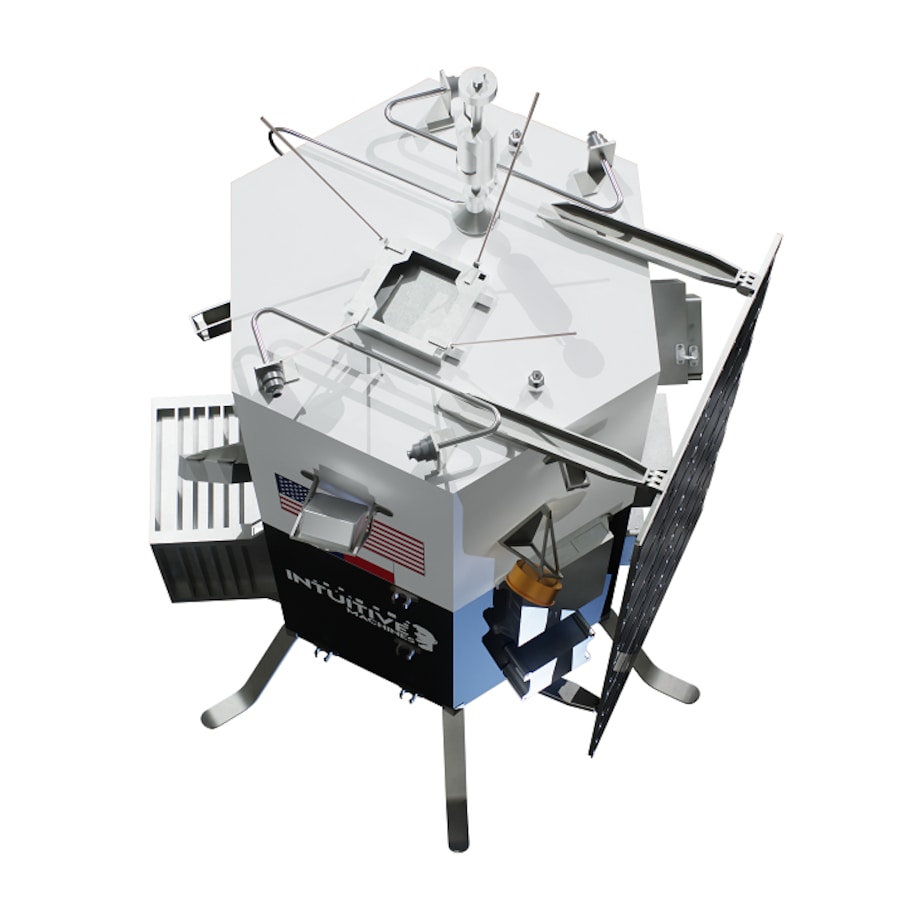
Source: Intuitive Machines
After about 10 Earth-days, the IM-2 mission will conclude. As the Shackleton region transitions to lunar night, the mission will lose the sunlight needed to energize its equipment’s solar cells, making further exploration impossible. However, while the mission might end, the science will have only just begun.
The trove of data collected on IM-2 will give us a wealth of knowledge about a key area of the Moon, helping pave the way for future crewed Artemis missions. Discovering water at the Shackleton Connecting Ridge would set the stage for a permanent habitat at the Moon’s south pole, as water ice could be converted to breathable oxygen and even used to create fuel for an eventual journey to Mars. Meanwhile, the data that Nokia Bell Labs collects from the IM-2 mission will be critical for advancing communications technologies in space exploration. Not only could Nokia design and build networks and devices that are optimized for future lunar and Martian missions, but the knowledge we glean would lead to further improvements to networks deployed in harsh environments right here on Earth.
How the lunar mission relates to Nokia’s business
While Nokia is proud to be playing a part in the exploration of our solar system, there are many business reasons for our interest in extra-terrestrial networks.
With its Tipping Point initiative, NASA is fostering a new era of public-private partnerships, shepherding the development of critical space technologies. The technologies that emerge from Tipping Point could be used in Artemis missions, which will establish sustainable operations on the Moon in preparation for future crewed expeditions to Mars. This presents many opportunities for Nokia and other Tipping Point companies to participate in the future space economy.
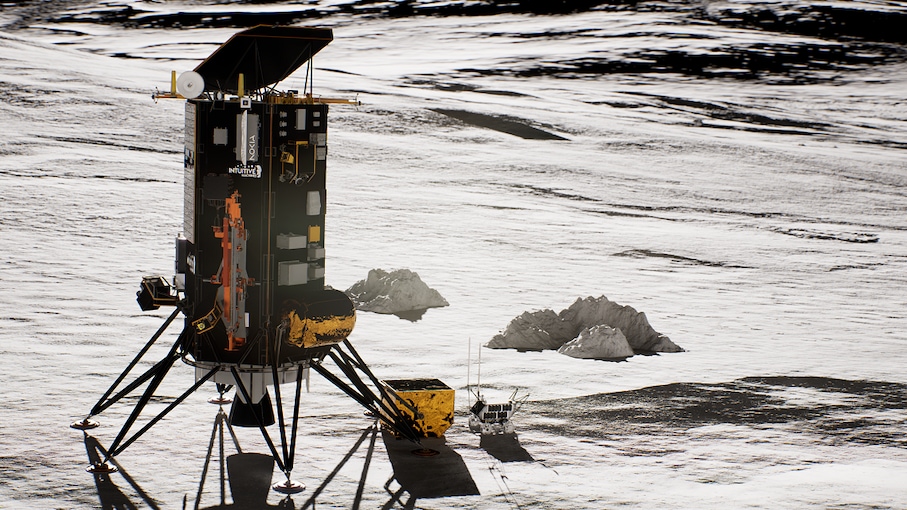
Source: Intuitive Machines and Nokia Bell Labs
Just as communications and networks are a vital part of the economy on Earth, they will be a vital element in any future lunar or Martian economy. Cellular networks would support habitat infrastructure and mission goals by linking sensors and connecting transport vehicles, scientific payloads, exploratory drones and rovers. Cellular links could be used to remotely operate dangerous machinery necessary for survival, such as mining and construction equipment.
Connectivity will play a major role in the lunar or Martian internet in the future. These networks will connect personal devices used by astronauts, like tablets, laptops and wearables. One day astronauts may even be able to take their smartphones to space, using them in a Moon or Mars habitat the same way they would use them on Earth.
This network won’t just provide key data for future lunar communications systems. We will also gain knowledge we can utilize right here on Earth. The Moon’s surface is one of the most inhospitable environments we have ever encountered, with no atmosphere, no natural protection from cosmic radiation, and temperatures that can fluctuate by as much as 300° C between lunar day and night. If Nokia can build a network that can function on the Moon, we can build a network that can function in the most extreme environments on Earth.
Space is a familiar frontier to Nokia Bell Labs
Nokia Bell Labs is no newcomer to space exploration. IM-2 is just the latest in Bell Labs’ long history of working with government, scientific and academic partners in space exploration. We worked with NASA to launch one of the world’s first communications satellites, Telstar 1, into orbit in 1962. We provided systems analysis and engineering for every crewed U.S. space program from Mercury to Apollo. And in 1964, two Bell Labs researchers, Arno Penzias and Bob Wilson, made the critical discovery of cosmic microwave background radiation left over from the Big Bang.
Additional resources
Downloadable assets for the media
Meet the IM-2 team
NASA
Through the Tipping Point initiative, NASA is supporting industry-developed solutions and commercial technologies that can solve key challenges for future space exploration
Intuitive Machines
Nokia is hitching a ride on Intuitive Machine’s Nova-C lander to the Moon’s surface. Nokia’s LTE base station and RF antennas will be integrated directly into the lander.
Lunar Outpost
Lunar Outpost’s M1 Mobile Autonomous Prospecting Platform (MAPP) rover will carry Nokia’s user equipment (UE) and RF antennas, which will maintain a constant link with the base station at the Nova-C lander.
Read more
About Nokia
At Nokia, we create technology that helps the world act together.
As a B2B technology innovation leader, we are pioneering networks that sense, think, and act by leveraging our work across mobile, fixed and cloud networks. In addition, we create value with intellectual property and long-term research, led by the award-winning Nokia Bell Labs.
Service providers, enterprises and partners worldwide trust Nokia to deliver secure, reliable and sustainable networks today – and work with us to create the digital services and applications of the future.
Media inquiries
Nokia Communications, Corporate
Email: Press.Services@nokia.com
Follow us on social media
LinkedIn Twitter Instagram Facebook YouTube
